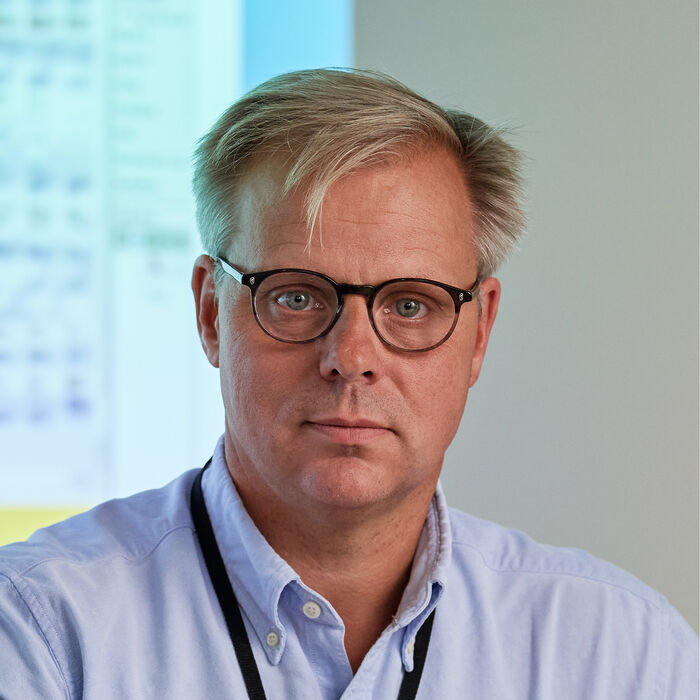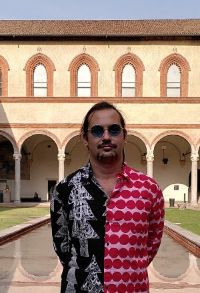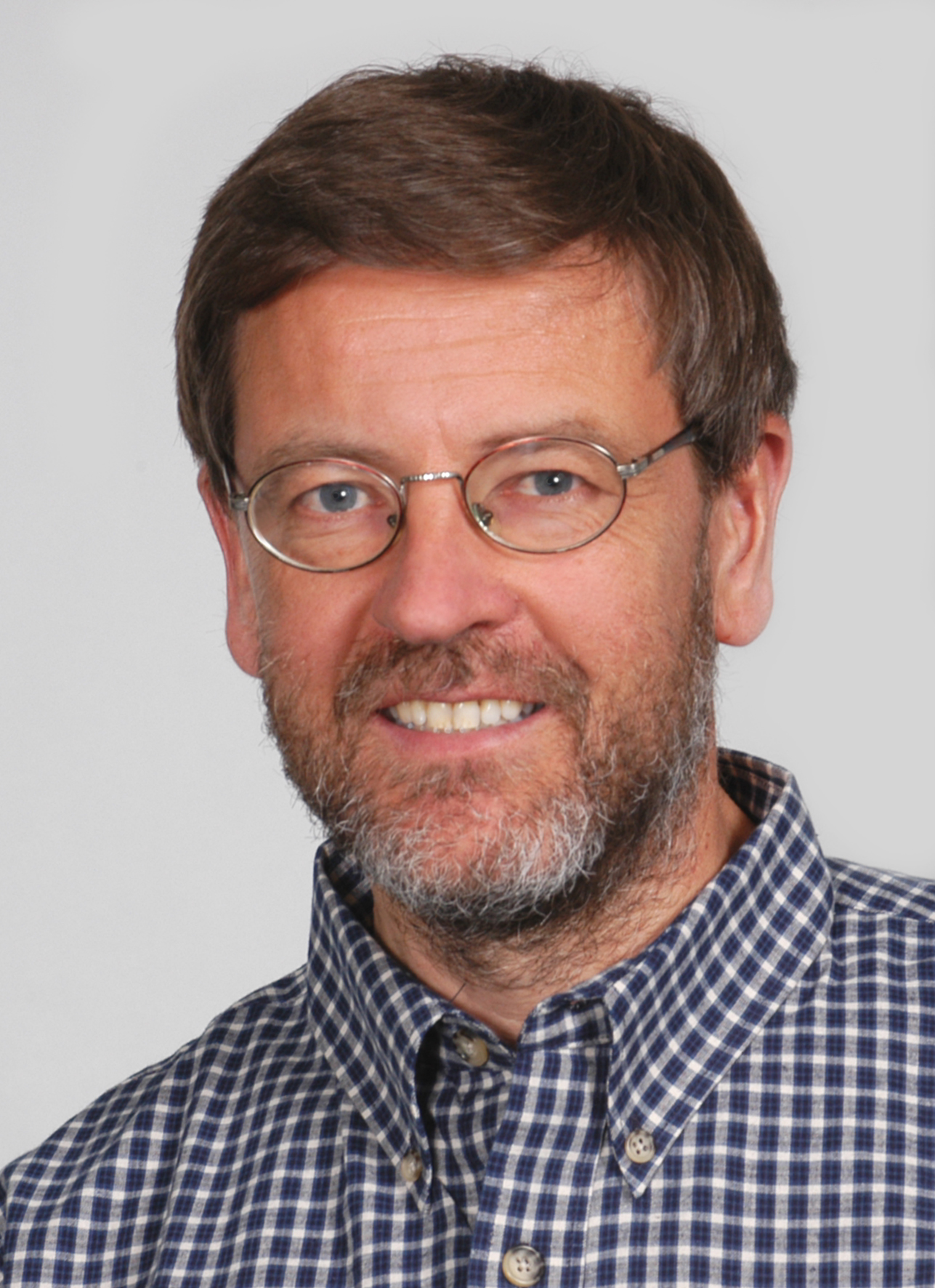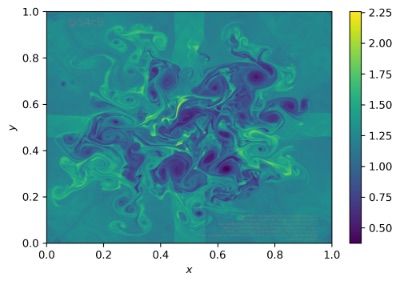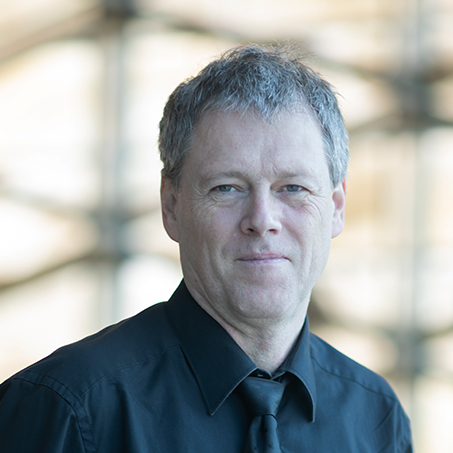Gjesteforelesninger og seminarer - Side 10
Super-resolution is a hot topic in current day Machine Learning. The origin of the methodology dates back to applications in seismic imaging. I discuss the evolution from the early days and highlight some papers which have given new theoretical insights along the way. I illustrate the bridge between traditional convex optimization and current day convolutional neural nets. Along the way I show some examples where we have used this for current day applications in seismic imaging.
Abstract: Transport and mixing in multiphase flow through porous media plays a key role in a range of biological, geological, and engineered systems. Here, we use numerical simulations to investigate the effect of intermittent multiphase flow on fluid stretching and folding, a fundamental mechanism driving solute mixing and reaction in porous media. We show that, in contrast to steady single-phase flows, the concurrent flow of two immiscible phases induces chaotic mixing, characterized by exponential stretching in the pore space. The stretching rate is found to decay with increasing capillary number, implying that the increasing flow intermittency observed at lower capillary numbers enhances the mixing efficiency. We propose a mechanistic model to link the basic multiphase flow properties to the chaotic mixing rate, opening new perspectives to understand mixing and reaction in multiphase porous media flows. The results presented here form part of the background for the recently started RCN-funded project M4: Mixing in Multiphase flow through Microporous Media, which will also be introduced.
This talk is part of the Mechanics Lunch Seminar series. Bring-your-own-lunch and lots of questions.
Abstract: The cerebral circulation must ensure continuous blood perfusion of the brain which is the biggest oxygen consumer in the human body. It must also provide mechanisms for adaptability to changing oxygen demand as well as resilience to local blockages. We will look at such mechanisms at the level of the microcirculation where the mechanics of blood flow is dominated by red blood cells. We will find that red blood cells do not only play the role of oxygen carriers, but that they are an important element of blood flow regulation itself. To this end, we will compare results from in vitro studies in microfluidic chips to theoretical and computational models and to in vivo data from mice. We will derive local auto-regulation mechanisms for blood flow and will study how local modifications in the vascular network can modify the global hematocrit distribution. These results will emphasize the relevance of red blood cell mechanics and microvascular network geometry in cerebral blood perfusion.
This talk is part of the Mechanics Lunch Seminar series. Bring-your-own-lunch and lots of questions.
Abstract: Swimming bacteria, growing cell tissues, molecular motors, and microtubule systems confined to a substrate are examples of active matter films that exhibit long-range nematic (orientational) order. Intrinsic activity in these systems builds mechanical stresses that tend to destroy local nematic order through topological defects, which act as sources of persistent active flows. The overall evolution and functionality of biological matter is greatly influenced by these orientational defects. Yet, their formation and dynamics are driven by a complex interplay between topological singularities in the nematic order and active flow instabilities, and this is not completely understood.
Click title to continue reading abstract...
For many real-life phenomena one may assume that the units of observation, typically patients, transition through a set of discrete states on their way towards an absorbing state. The states often constitute various stages of a disease, from perfect health through various stages of dementia for example. Multi-state models are a class of statistical models which allow us to study the time spent in different states, the probability of transitioning between states, and the relationship between these quantities and covariates of interest. In many applications the transition times between states are not observed exactly; instead, the current state of the patients is queried at arbitrary times. The transition times are therefore interval censored, and this makes inference and modelling challenging. Most current approaches are based on the Markov assumption, for example the simplest parametric model available - the time-homogeneous Markov model. Here, we propose a new, general framework for parametric inference with interval censored multi-state data. Our models allow non-Markovian behaviour. I will present the framework and an algorithm for the automatic construction of the likelihood function, along with real-data examples. This talk is based on joint work with Marthe Aastveit and Nils Lid Hjort.
Abstract: Exchange processes across a porous-medium free-flow interface occur in a wide range of environmental, technical, and bio-mechanical systems. In the course of these processes, flow dynamics in the porous domain and in the free-flow domain exhibit strong coupling, often controlled by mechanisms at the common interfaces. Such processes need to be analyzed on small scales and new scale-bridging modeling concepts need to be developed for an accurate description also on larger scales (REV scale). Recent developments within the Collaborative Research Center "Interface-Driven Multi-Field Processes in Porous Media – Flow, Transport and Deformation" and the Cluster of Excellence SimTech at the University Stuttgart regarding such aspects for coupled free-flow and porous-medium flow systems will be presented in this talk.
This talk is part of the Mechanics Lunch Seminar series. Bring-your-own-lunch and lots of questions.
Abstract: We present a second-order numerical scheme to compute capillary bridges between arbitrary solids by minimizing the total energy of all interfaces. From a theoretical point of view, this approach can be interpreted as the computation of generalized minimal surfaces using a Newton-scheme utilizing the shape Hessian. In particular, we give an explicit representation of the shape Hessian for functionals on shells involving the normal vector without reverting back to a volume formulation. From an algorithmic perspective, we combine a resolved interface via a triangulated surface for the liquid with a level-set description for the constraints stemming from the arbitrary geometry. The actual shape of the capillary bridge is then computed via finite elements provided by the FEniCS environment, minimizing the shape derivative of the total interface energy.
This talk is part of the Mechanics Lunch Seminar series. Bring-your-own-lunch and lots of questions.
C*-algebra seminar talk by Ole Brevig (University of Oslo)
Second of two lectures on constructing non-Fourier-Mukai functors
Abstract: After a broad overview of the activities of MecaWet group at PMMH, the presentation will focus on the “dry side” of MecaWet.
This talk is part of the Mechanics Lunch Seminar series. Bring-your-own-lunch and lots of questions.
First of two lectures on constructing non-Fourier-Mukai functors
Cards are drawn, one at a time, with replacement, from a deck of n cards. I study the total time W_n needed until we have seen all n cards, via different perspectives, along with a Gumbel limiting distribution. Various non-trivial identities, involving different perspectives for moments and Laplace transformations, are found as corollaries. These findings are also used to estimate the number of different cards,if uknown. If I needed to sample 133 words from a document, before I had 50 different words, what is the vocabulary size for the document? How many words did Shakespeare know (including those he never used in his writing)?
An Abels Tårn podcast about some of these themes, which attracted a fair amount of inspired comments and guesses from the public (specifically, finding the mean of W_n above, for the case of n = 52 cards), can be found on the Abels Tårn website, July 2021, as a conversation with Torkild Jemterud, Jo Røislien, and myself.
The PDE seminars for the Autumn of 2021 will be held every Tuesday from 10:15–12:00
Professor Dan Crisan, Imperial College London, author of several books on filtering is now holding an intensive course.
Abstract: Mixed-dimensional partial differential equations (PDEs) are equations coupling unknown fields defined over domains of differing topological dimensions. Such mixed-dimensional PDEs naturally arise in a wide range of fields including geology, biomedicine, and fracture mechanics. We introduce an automated framework dedicated to mixed-dimensional problems as part of the FEniCS library. This talk gives an overview of the abstractions and algorithms involved. The introduced tools will be illustrated by concrete examples of applications in biomedicine (see below for more detailed context).
This talk is part of the Mechanics Lunch Seminar series. Bring-your-own-lunch and lots of questions.
The talk is elementary and discusses empirical modelling of single variables with insurance losses as example. There are in such cases little or no theory to go on, and the amount of data is many situation quite scarce. Why do we so often limit ourselves to fit two-parameter families? It will be suggested that it may be a good idea to work with more flexible models with three or four parameters and that this may provide a nice framework for automating the entire procedure for the computer to work alone. Sure, with little data the parameters may be unstably estimated, but that may not apply equally to the distributions they define. Many-parameter families suitable for insurance losses will be reviewed with some simple asymptotics in an example allowing this and with Monte Carlo to throw light on the issue in other cases.
In this talk I will discuss the variational form of Bayes theorem by Zellner (1988). This result is the rationale behind the variational (approximate) inference scheme, although it is not always that clear in modern presentations. I will discuss two applications of this results. First, I will show how to do a low-rank mean correction within the INLA framework (with amazing results), which is essential for the next generation of the R-INLA software currently in development. In the second one, I will introduce the Bayesian learning rule, which unify many machine-learning algorithms from fields such as optimization, deep learning, and graphical models. This includes classical algorithms such as ridge regression, Newton's method, and Kalman filter, as well as modern deep-learning algorithms such as stochastic-gradient descent, RMSprop, and Dropout.
The first part of the talk is based on our recent research at KAUST, while the second part is based upon \texttt{arxiv.org/abs/2107.04562} with Dr. Mohammad Emtiyaz Khan, RIKEN Center for AI Project, Tokyo.
Abstract: The concept of symmetry breaking is well-known in physics, for instance in condensed matter, where it results from interactions in a many-body system — e.g., phase transition in a spin system. Yet, as physicists, we tend not to think of the patterned structures seen in living, many-body systems in terms of broken symmetries. Whether it is the spacing of knuckles on our hand, the collective alignment of hairs on an insect wing, or more globally the transformation of a homogeneous, isotropic embryo into a developed organism, symmetry breaking abounds in biology. What new insights can a physicist bring to understand the origin of these complex phenomena? (Click title to read full abstract below...)
Abstract: Elimination of substances from the brain is believed to occur by a combination of convection and diffusion. In previous work, transport along perivascular spaces around blood vessels have been explicitly meshed and modeled, and also 1D-3D models have been used to model the interaction between blood and brain tissue. A problem with both these approaches is that it requires spatial information of all blood vessels within the brain and in addition may result in a computationally expensive system to solve. In this talk, I will introduce a homogenized model of transport in the brain, also taking into account transfer between different compartments (like blood and brain tissue) within the brain. Fluid flow in and between compartments are modeled with the mulitple-porosity elasticity theory (MPET), while transport within and between compartments are modeled with convection-diffusion equations. I will further show preliminary results from our model and compare with experimental data obtained in a glioma (brain tumor) patient, where transport between blood and brain is typically altered.
This talk is part of the Mechanics Lunch Seminar series. Bring-your-own-lunch and lots of questions.
Now it's time for the traditional Section 3 PhDs' & postdocs' gathering, which will take place in Abels Utsikt on October 12th, 2021, 09.30 - 16.30. All PhD students and postdocs have the opportunity to give a 15-minute talk on their research. In addition, Andrey Pilipenko (National Academy of Sciences of Ukraine/Igor Sikorsky Kyiv Polytechnic Institute) will give a talk on solving ODEs with non-Lipschitz coefficients by perturbation and Hao Tang (UiO) will introduce his research on stochastic fluid models. Welcome!
Abstract: My soft matter research group investigates the autonomous transformation of phospholipid agglomerates into membrane compartments through a sequence of topological changes on solid interfaces. This process is initiated by contact and wetting of artificially created as well as natural surfaces by the lipids, and proceeds via a network of interconnected lipid nanotubes to produce nearly uniform lipid bilayer compartments. Under minimal assumptions it is conceivable that such process could have occurred on the early Earth, where the autonomous formation of simple membrane compartments is presumed to have enabled encapsulation of nucleotides and prebiotic chemistry precursors. According to the currently accepted “bulk hypothesis”, such compartments have spontaneously formed under moderate environmental conditions from lipids suspended in bulk aqueous medium. Only very recently, surfaces have emerged as potential supporting structures for the self-assembly of prebiotic compartments. In my talk, I will report on new evidence for the involvement of surfaces in protocell nucleation and development. The talk will highlight the implications of the new findings for our understanding of possible origin of life processes, and argue that materials properties-driven autonomous processes on solid interfaces might have greater role in the development of life than currently considered.
Stable polynomials are a multivariate generalization of real-rooted univariate polynomials. This notion of stability for hypersurfaces can be extended to lower-dimensional varieties, giving rise to positively hyperbolic varieties. I will present results showing that tropicalizations of positively hyperbolic varieties are very special polyhedral complexes with a rich combinatorial structure. This, in particular, generalizes a result of P. Brändén showing that the support of a stable polynomial must be an M-convex set.
